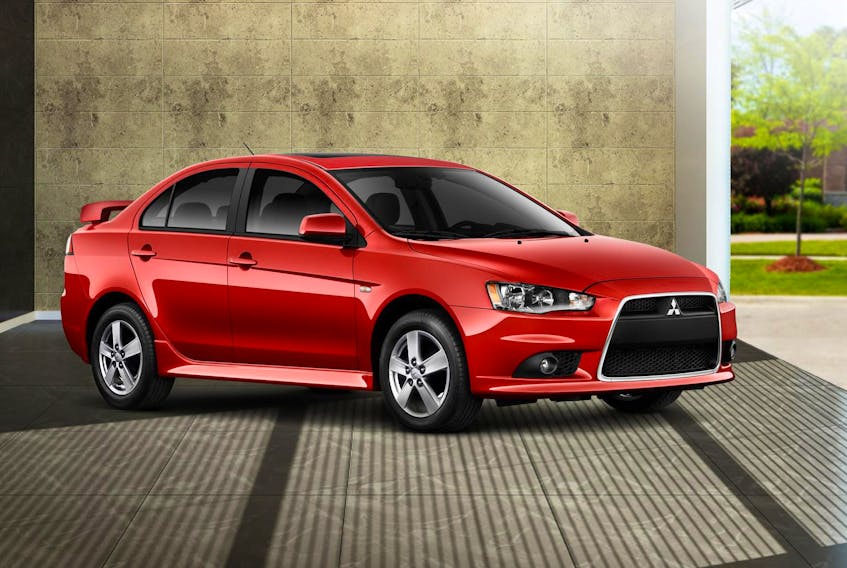To say that Mitsubishi got some good use out of their most recent Lancer generation might be a massive understatement.
The latest generation of the brand’s popular small car came to market for model year 2008, and went on selling, largely unchanged, until it was cancelled after model year 2017.
That’s nine years without a significant update, though the market didn’t seem to mind.
Lancer remained a go-to model for many Canadians during that period, thanks in no small part to solid reliability, good overall value, an unbeatable warranty, and good driving manners. Some models were even available with all-wheel drive, and both sedan and hatchback body styles could be had, depending on the year in question.
Look for content including automatic temperature control, automatic lights, Bluetooth, a full driver computer, premium stereo systems, and more. Power came from one of two four-cylinder engines, with horsepower pegged around 150 from the two-litre unit, and around 170 from the 2.4-litre unit.
Key competitors include the Honda Civic, Mazda3, Ford Focus, and other compact cars.

Check Paint, Body, Finish
Test-drivers are advised to carefully scrutinize the paint finish and body of the Lancer they’re considering. Some owners have reported less-than-stellar durability from the paint on their Lancers, especially in vulnerable areas like the edge of the hood, or down low, behind the wheels. Don’t forget to inspect the lower, inner edges of the hood, trunk, and door panels, for signs of rust.
Gently pull away weather stripping in the process for a better look. Remember that paint damage can lead to rust, so plan on fixing any chips and scratches if possible.
Rough Road Suspension Test
Before arriving for your test drive, be sure to track down a nearby stretch of rough road. You’ll use it to coax potential warning signs from the Lancer’s suspension.
Travel down the rough road at an appropriate speed, and open your ears. If you notice any unwelcome banging, popping, smashing or clanging sounds in the process, and especially if you can “feel” these through the floor or steering of the vehicle, be sure to have the suspension professionally inspected before you buy, or, expect a repair bill in the near future.
Check Transmission
Zero in on the CVT transmission, which was Lancer’s automatic transmission option. Test the transmission at light, moderate, and full throttle.
Signs of clumsiness, failure to accelerate in a timely fashion, harshness, slamming or other unpleasant sensations can be taken as a strong sign to have the transmission inspected by a dealer technician. Sometimes, problems like these can be fixed with a simple software update.
Other times, they’re evidence of a larger problem. If in doubt, get it checked out (or move to another unit).
Further, for maximum long-term reliability, confirm that the Lancer you’re considering is up to date on all transmission servicing, and that all such servicing has taken place in a dealer setting. Why? Use of incorrect transmission fluid, or improper procedures to drain and fill it, can cause problems.
Check the Smart Keys
The Lancer you’re considering may come with smart key fobs, which enable touch access to the locks and ignition. Confirm that you’re able to work all door locks using both the smart key fobs, both via the buttons on the remote, and on the vehicle door handles.
Further, stop and restart the engine several times, where appropriate, on your test drive. If the push-button start has any difficulty restarting the engine in a timely fashion, you may need a new ignition relay or a new battery.
In some cases, problems with the smart key system require a dealer to reprogram the key fobs.
As New as You Can
Though most owners report few if any issues with their Lancers as they age, some research suggests that Mitsubishi corrected several niggling issues, including some of the ones listed above, over the years. As a result, spending a few bucks more on a newer model year unit may be advisable for maximum peace of mind.
The information presented above is gathered from online owner discussion groups and collaboration with a network of automotive repair professionals. The above information is not a comprehensive list of all possible issues with the vehicle in question and is instead intended to draw shopper attention to possible trouble spots they may wish to investigate before they buy. In most cases, problems listed above are reported with relative rarity in comparison to total sales volume. Shoppers are advised to have a dealer-performed pre-purchase inspection on the vehicle they’re considering for maximum peace of mind.
RELATED:









